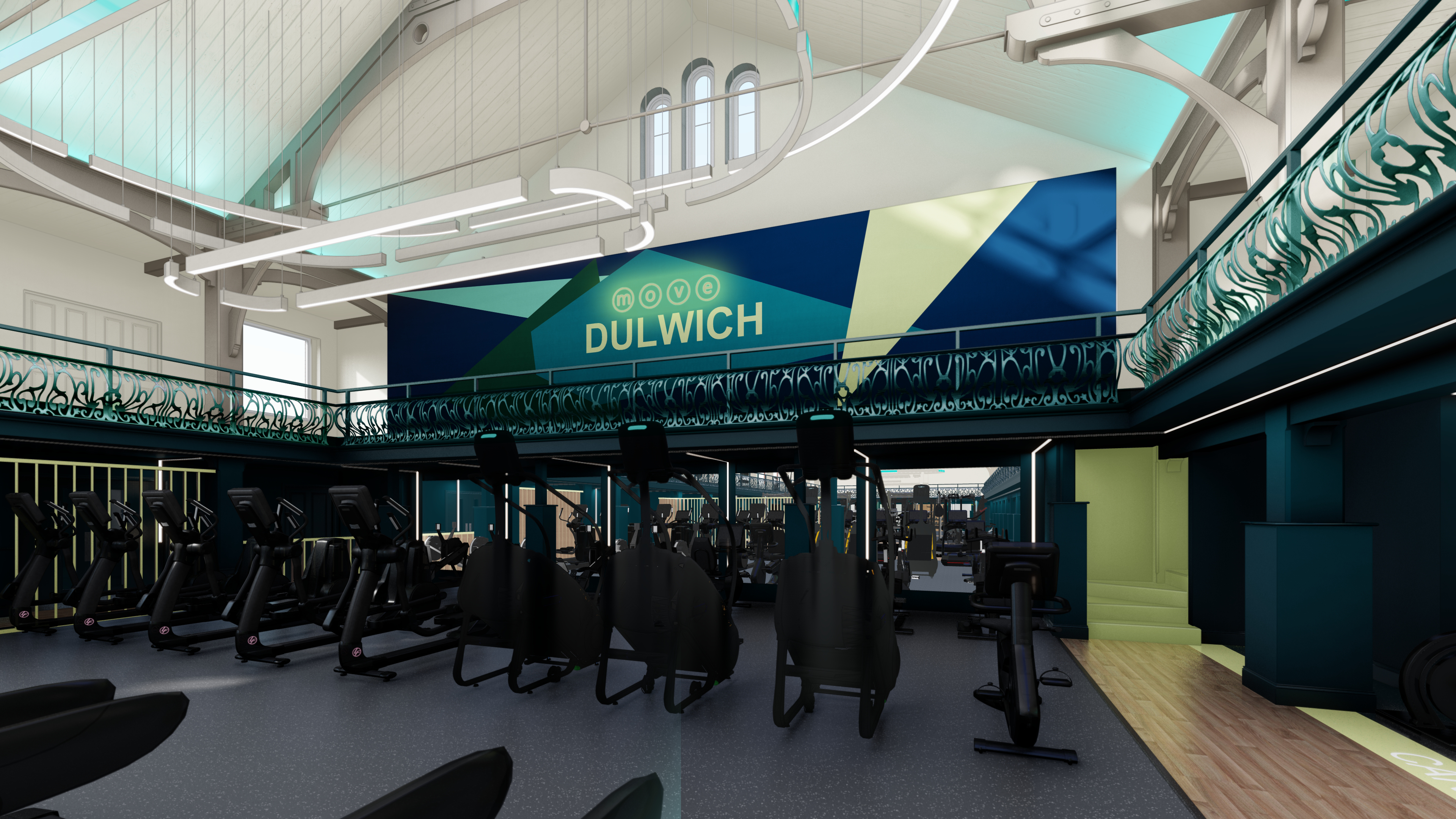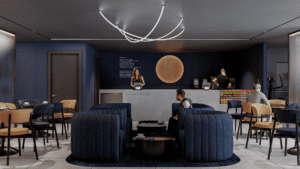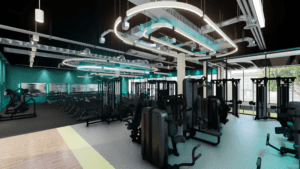
Gym design trends that defined 2024:
It’s been a busy year for the fitness industry. As more people started prioritising their health and fitness, the number of clubs and memberships surged.
Member expectations have evolved, and as a result we’ve seen the emergence of new industry trends. Here’s a look back at five key trends that defined gym design in 2024:
1. Community-Centric Design
Social interaction has emerged as a primary motivator for gym memberships. Gyms are increasingly seen as the new social hubs, especially among younger generations.
To meet this demand, gym design has evolved to include dedicated lounge areas, wellness cafés, and co-working spaces. These facilities encourage interaction, foster community, and give members a reason to spend more time in the gym beyond their workout. By creating spaces where members can connect, relax, or work, gyms are becoming integral parts of their daily lives.
2. Holistic Wellness
The fitness industry has undergone a transformation as member expectations have shifted towards a more comprehensive approach to health. Today’s gym-goers want more than just a weight rack or cardio machine—they seek spaces that cater to their mental and physical wellness.
This has led to the integration of holistic wellness elements in gym design. Meditation rooms, wellness lounges, and nutrition bars are becoming staples in modern gyms. These spaces offer members a chance to recharge, de-stress, and feel supported on their overall wellness journey. As designers, we’ve focused on creating environments that reflect this growing demand for well-rounded fitness experiences.
3. Recovery Zones
In 2024, recovery moved from being an afterthought to a central feature of gym design. We’ve worked on several projects this year that include dedicated recovery zones, enabling members to properly cool down and rejuvenate post-workout. These zones are taking up larger areas of the gym floor, demonstrating the commitment and long-term implementation of recovery.
This year more than ever before, there has been a shift away from basic recovery offers of just foam rollers and stretch mats. As members begin to take recovery seriously, clubs have been responding by developing fully-fledged recovery zones. These spaces can the latest technologies, to hot and cold therapies like sauna and cryo. These spaces require careful design considerations.
4. Sustainable Design
Sustainability continues to be a major focus for gym operators. Environmental consciousness is driving decisions about materials, energy-efficient systems, and layouts that minimise carbon footprints.
Additionally, biophilic design has gained momentum, bringing the natural world into gym spaces. We’ve seen increased demand for features like indoor plants, natural lighting, and nature-inspired textures and colours. These not only align with sustainability goals but also create calming, energising environments that enhance the member experience. Sustainable design is no longer just a bonus—it’s an expectation.
5. The Rise of Strength
Strength training has seen remarkable growth in popularity, particularly among women, reshaping how gym floors are designed.
This year, we’ve been allocating more floor space to strength zones to accommodate the demand for free weights, racks, and functional training equipment. These zones are carefully planned to ensure optimal flow and accessibility while reducing noise interference with other areas of the gym. Strength training is no longer a niche activity—it’s a central part of the modern fitness journey, and gym designs are adapting to reflect this shift.
The trends we’ve seen this year highlight how far the fitness industry has come in addressing the diverse needs of its members. From fostering community and promoting mental wellness to embracing sustainability and supporting strength training, gyms are becoming more than fitness spaces—they’re becoming destinations for holistic health and connection.
As we look back on the spaces we’ve designed in 2024, we’re proud to have been at the forefront of these innovations. These trends are shaping the future of fitness, and we can’t wait to see how they’ll continue to evolve in the years to come.








